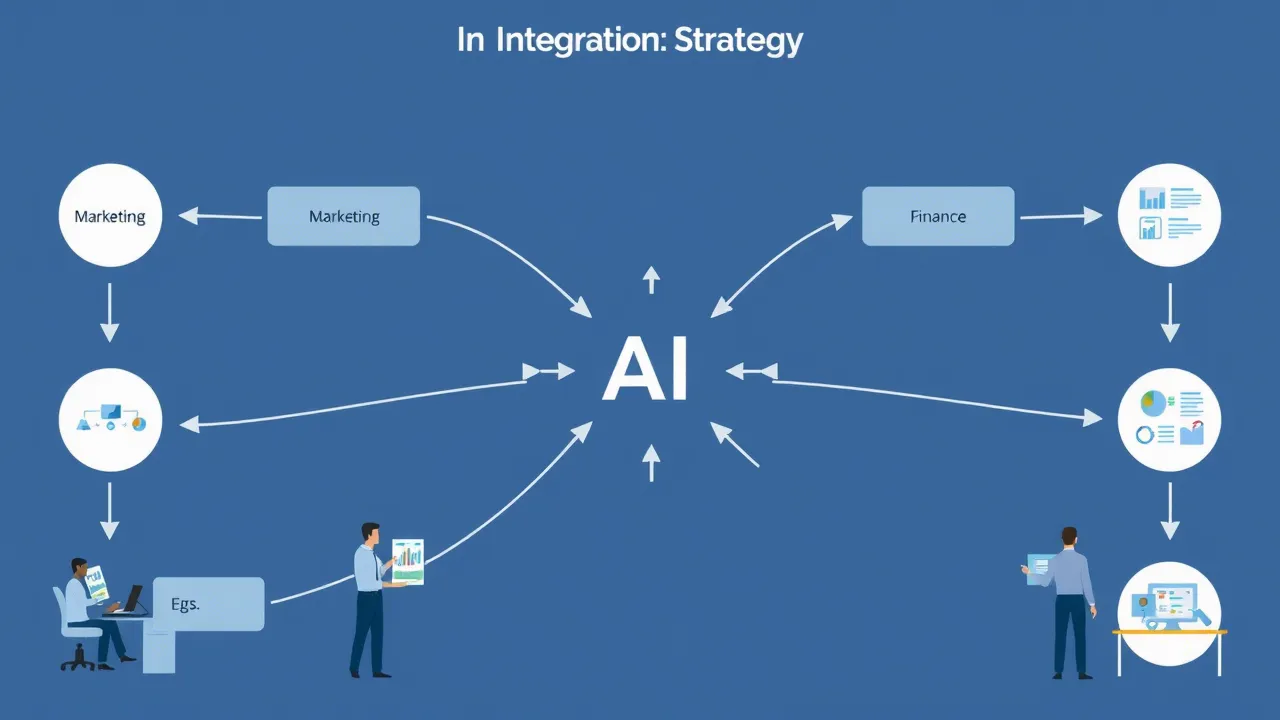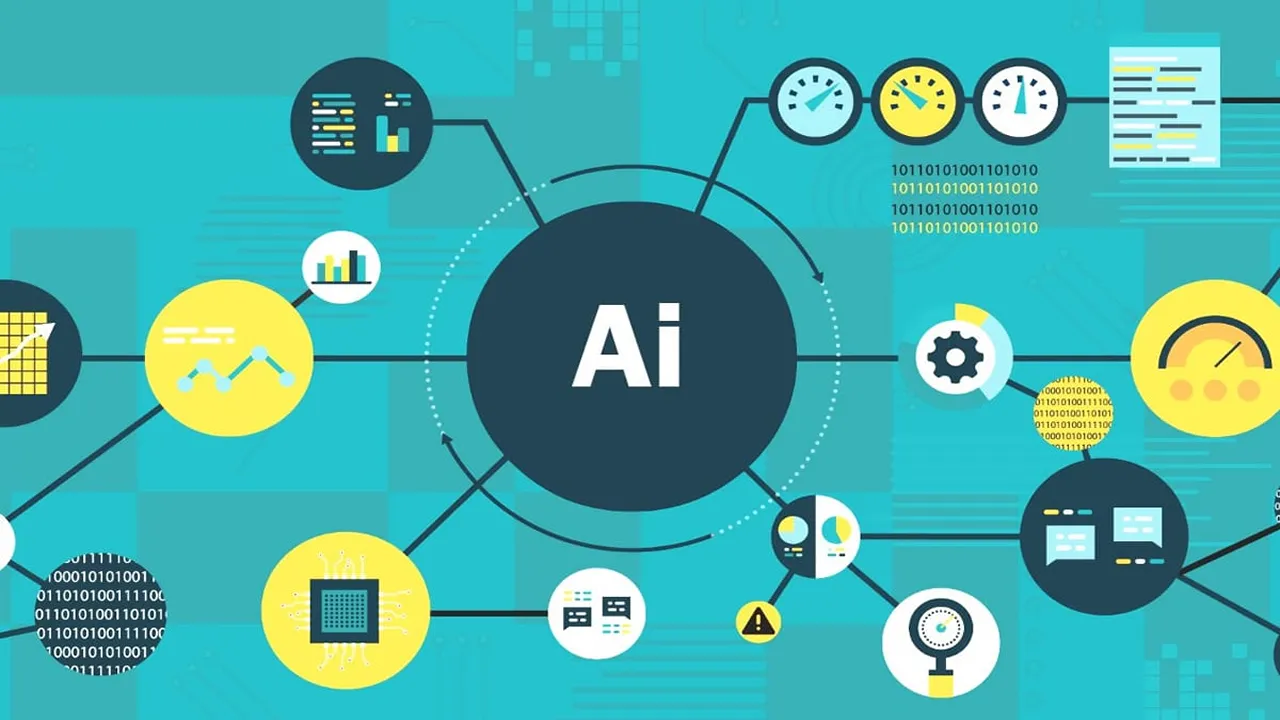No Longer Hype: Why AI Integration in 2025 is a Matter of Survival
In 2025, artificial intelligence has definitively ceased to be just a trendy technology from futurists presentations. Today, it is a fundamental tool for increasing efficiency, optimizing costs, and creating breakthrough products. The question for businesses is no longer "should we implement AI?" but "how can we do it quickly, effectively, and safely?". However, many companies face difficulties: research shows that over 60% of pilot AI projects fail to reach full-scale implementation due to a lack of clear strategy, data issues, and a shortage of expertise. Companies urgently need help using AI, and these are not just words: investments in startups specializing in AI integration are breaking all records.
This guide is for business leaders who want to turn AI from an abstract idea into a real competitive advantage. We will walk through the key stages of successful artificial intelligence integration step-by-step – from strategy and governance to technology and team.

Step 1: Strategy and Goal Setting – Start with "Why?"
The biggest mistake is implementing AI for the sake of AI. Successful integration always begins with business goals.
- Audit of Problem Areas: Analyze your business processes. Where are you losing money? Where do your employees spend time on routine tasks? Where can you improve the customer experience? AI is excellent for automating support, personalizing marketing, optimizing logistics, forecasting demand, and analyzing big data.
- Defining KPIs and ROI: Clearly articulate what you want to achieve. Reduce support response time by 30%? Increase conversion rates in email campaigns by 15%? Decrease the defect rate in production by 5%? Assessing the potential return on investment (AI ROI) will help prioritize projects and justify them to leadership.
- Start with a Pilot: Dont try to revolutionize the entire company at once. Choose 1-2 pilot projects with clear goals and measurable results. A successful pilot will be the best proof of the technologys effectiveness and a springboard for further scaling.
Step 2: AI Governance and the Role of the Chief AI Officer – Setting the Rules of the Game
Uncontrolled use of AI can lead to serious reputational, legal, and financial risks. That is why AI Governance is becoming a critically important element.
AI Governance is a system of rules, processes, and standards that ensures the ethical, secure, and transparent use of AI within a company. It answers questions like: how do we ensure data privacy? How do we combat bias in models? Who is responsible for decisions made by AI? How do we comply with regulations (like GDPR)?
In response to this challenge, a new key role is emerging in the C-Suite – the Chief AI Officer (CAIO). This is not just a technical specialist, but a strategic leader responsible for developing and implementing the AI strategy, establishing AI Governance, and ensuring that AI initiatives align with overall business goals. Giants like Citi and ServiceNow have already introduced such roles, understanding that successful AI scaling requires a dedicated center of responsibility.
Step 3: Data Preparation and Technology Selection – Building the Foundation
AI models are "fed" with data. The "garbage in, garbage out" principle is 100% applicable here.
- Data Infrastructure: Ensure you have access to clean, high-quality, and relevant data. You may need to create or modernize your data warehouse and establish data collection and cleaning processes.
- Technology Stack: "Buy" vs. "Build"?
- Buy: For many standard tasks (e.g., a website chatbot, sentiment analysis of reviews), there are ready-made SaaS solutions. This is the quickest and easiest way to start.
- Build: For unique, core business processes, it makes sense to develop custom solutions. This is where cloud platforms come in. AWS (Amazon Web Services), Google Cloud, and Microsoft Azure offer powerful services (e.g., Amazon SageMaker) that allow you to train, fine-tune, and deploy your own AI models without building the entire infrastructure from scratch.
The use cases for AI in business are diverse, from predictive analytics for forecasting customer churn to generative AI for creating marketing content.
Step 4: Team, Implementation, and Scaling – From Pilot to Culture
Technology is nothing without people. The success of AI integration depends on the team and corporate culture.
- Building a Team: You will need specialists with different competencies: Data Scientists for data analysis and model building, ML Engineers to deploy them into production, and business analysts who "translate" business needs into the language of data. The CAIO leads this process.
- Change Management: Explain to employees why AI is being implemented. It should be perceived not as a threat, but as an assistant that takes over routine work and allows people to focus on more creative and strategic tasks. Provide training.
- Scaling: After a successful pilot project, develop a roadmap for rolling out the solution to other departments or processes. For example, ServiceNow uses AI to automate its own IT processes and then offers these same solutions to its clients, demonstrating real-world effectiveness.
Frequently Asked Questions (FAQ)
Question: Where should we start with AI integration if we have a limited budget?
Answer: Start small. Choose one clearly defined business problem (e.g., manually sorting incoming emails) and solve it using an off-the-shelf SaaS solution or an API from a cloud provider. This will allow you to get a quick and measurable result (ROI) with minimal initial investment and prove the technologys value to management.
Question: What is AI Governance and why is it so important in 2025?
Answer: AI Governance is a set of rules and processes for the safe, ethical, and legally compliant use of AI. It is critically important because AI systems make decisions that affect customers and the business. Proper governance helps to avoid model bias, data breaches, and legal violations (like GDPR), and builds trust in your AI solutions.
Question: Is it mandatory to hire a Chief AI Officer (CAIO)?
Answer: Its not mandatory for small businesses or individual pilot projects; a CTO or CDO can perform these functions. However, for companies aiming for a large-scale AI transformation, a dedicated CAIO becomes a necessity. This leader ensures a unified strategy, manages risks, and guarantees that AI investments deliver real business value.
Question: How can we measure the ROI from AI implementation?
Answer: ROI is measured through predefined KPIs. This can be: 1) Cost Savings (reduction in manual labor hours, optimization of material consumption); 2) Revenue Growth (increased conversion through personalization, higher average order value); 3) Efficiency Gains (faster processes, reduced equipment downtime); 4) Risk Reduction (more accurate fraud detection).
